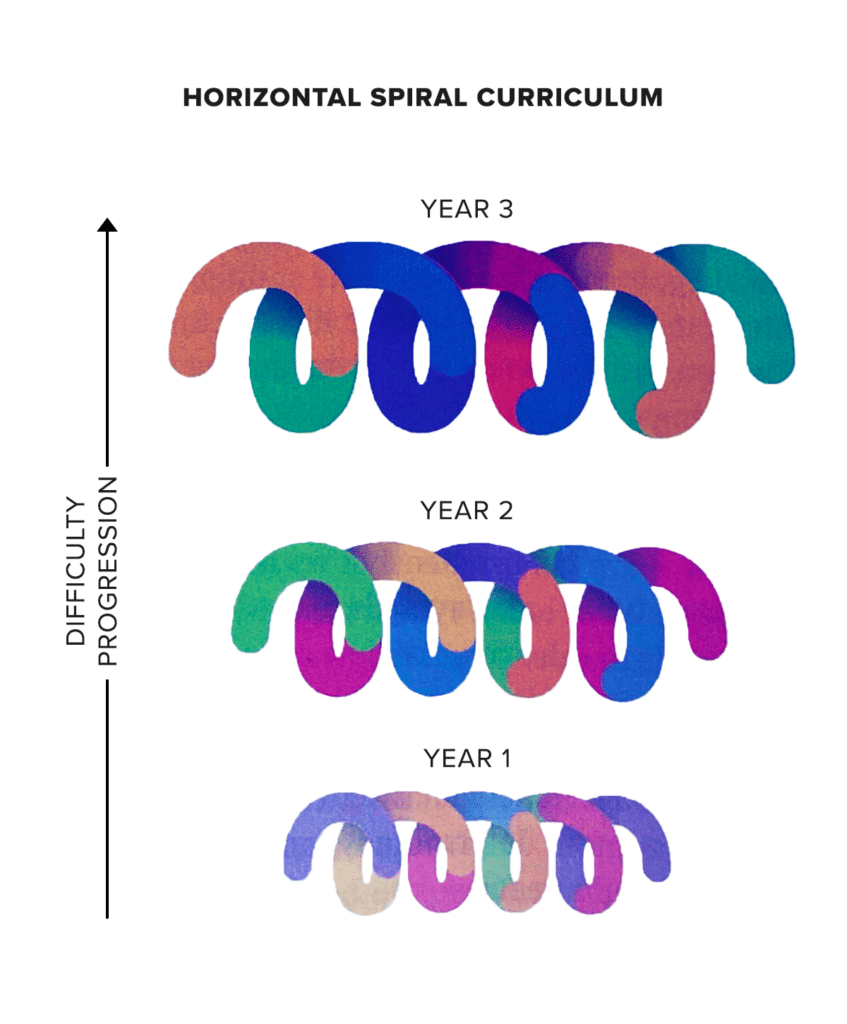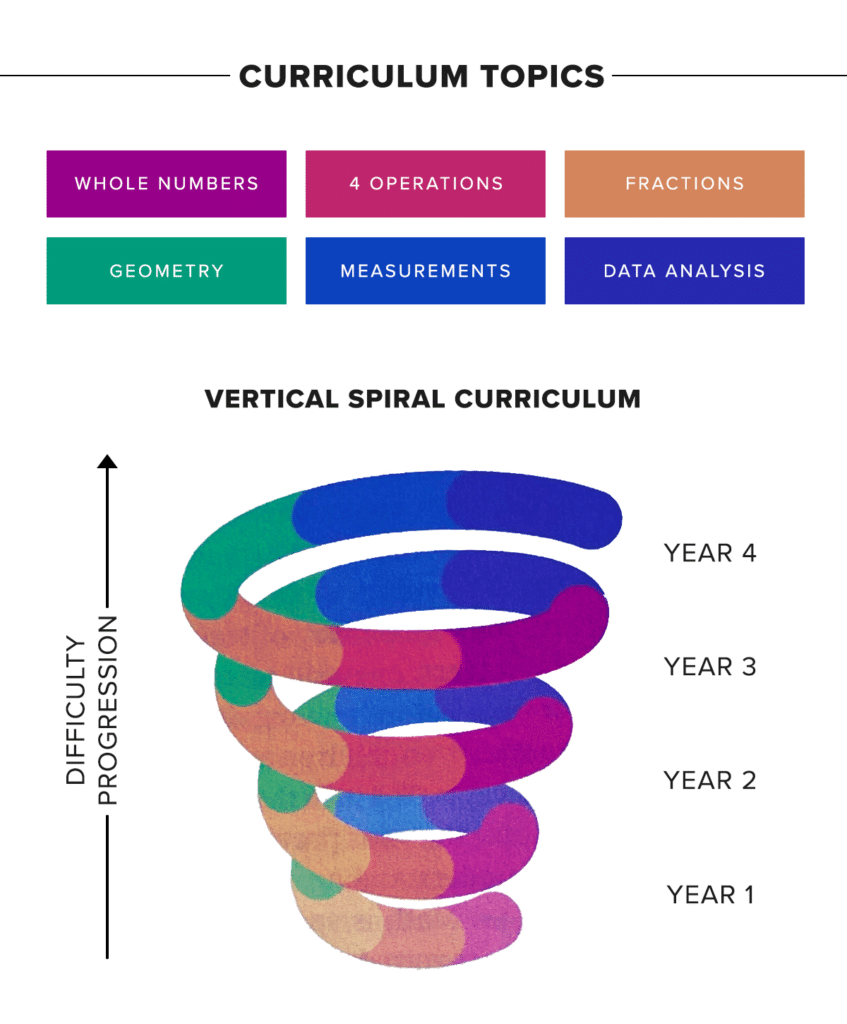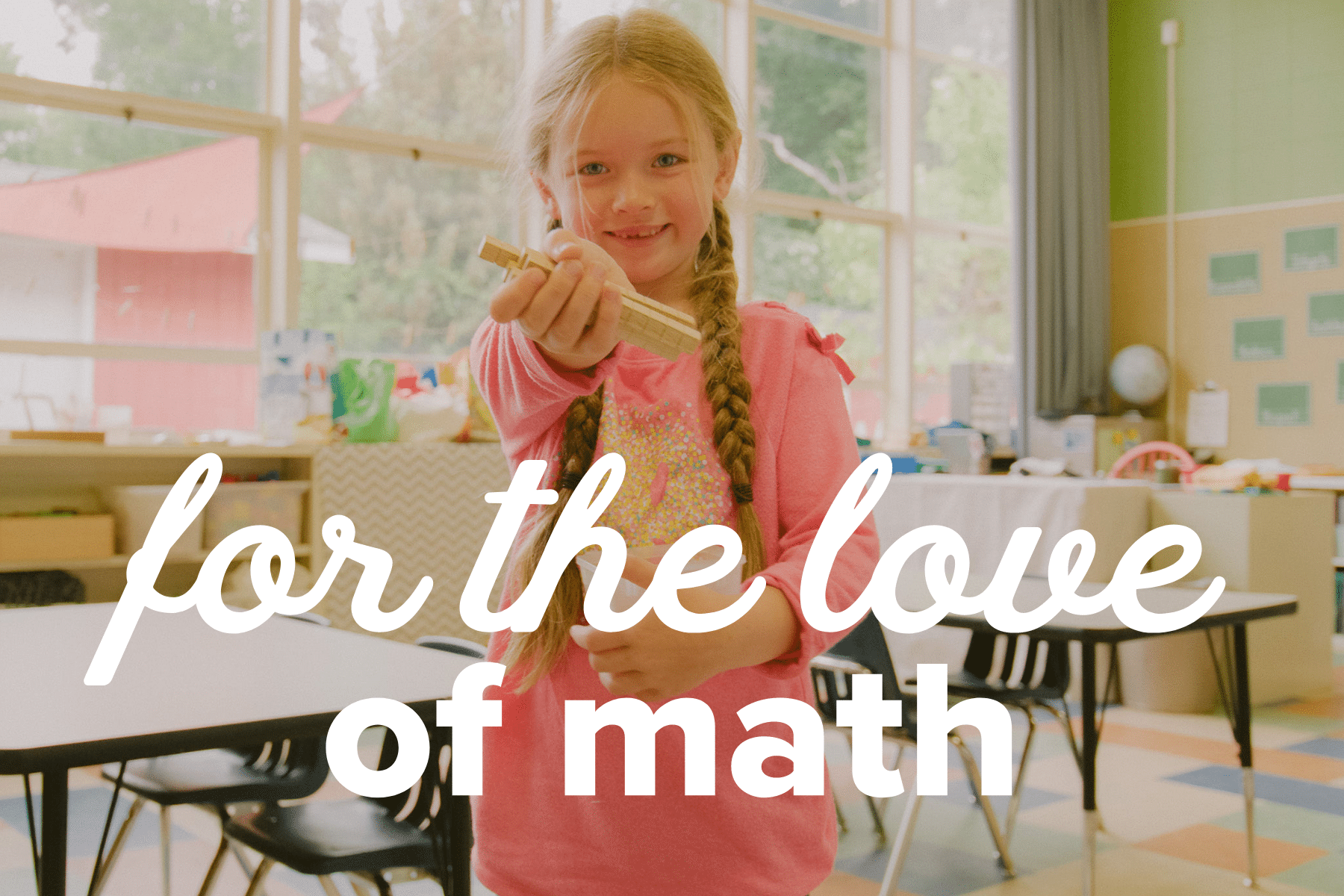To help those who are curious about what Singapore Math is all about, this series of blog posts will take you through the history, approach, and essentially the “why” of Singapore Math. These conversations will largely draw from a paper written by SLO Classical Academy graduate, Sadie Richert.
Our first post in this series provided the background of the Singapore Math Curriculum, including how and why it came to the United States. In the next post, we explored the “Concrete-Pictorial-Abstract” (CPA) method and bar modeling. Today, Sadie’s research will take us through two unique and essential elements of Singapore Math – Mental Math and the Spiral-Mastery approach to curriculum. Read on…
While the model method and CPA approach have gained international popularity, misconceptions about Primary Mathematics remain sprinkled throughout reviews of the curriculum. Notably, many claim that Primary Mathematics is a “Mastery” as opposed to a “Spiral” Curriculum. Spiral curriculums in the US break topics “into bite-sized lessons” which are “alternated with lessons from other topics throughout the year,” providing reinforcement of concepts over time and avoiding information overload, but resulting in a potentially less-organized learning process.

Mastery programs discuss each topic fully before moving on to the next, emphasizing in-depth practice and material “mastery,” but seemingly less conducive to long-term review since each topic is only considered one time during a school year. Singapore’s approach does not spiral horizontally throughout the school year like other US programs. However, as representatives of the Ministry of Education describe in a 2019 report, “the curriculum is designed in a spiral manner where concepts and skills in each content strand (e.g., Numbers and Algebra, Geometry and Measurement) are revisited and built upon at each level to achieve greater depth and understanding.”
Instead of bouncing between topics throughout the year with a discontinuity that necessitates excessive review for some students every time material reappears (while leaving more advanced students bored), Singapore spirals vertically across grade levels. Topics are addressed comprehensively at one longer period of time, allowing weaker students to focus on essential principles while advanced students progress to more complicated applications. At the next grade level the topics are spiraled through again, beginning with review from the previous year.
Fundamentally however, concepts are never fully self-contained within any topic category. Principles from one section are practiced throughout the year as elements of other sections. This “Spiral-Mastery” approach highlights the unity of mathematical ideas within each topic and across topics, forming a discipline woven together by the strands of logic.

Prioritizing mastery amid a spiral curriculum, Primary Mathematics not only fosters conceptual comprehension, but also emphasizes technical skills. Lack of computational ability is detrimental even to students who grasp mathematical procedures—memorizing the multiplication table (for example) is never a wasted exercise! As Wenxi Lee notes, students who are not accurate in calculations will be unable to “demonstrate their mathematical proficiency and will perform poorly on tests.” Additionally, their higher-order thinking skills will actually be compromised because “their mental space will be overcrowded in figuring out both problem-solving and equation solving.” Practice here becomes invaluable—hence the inclusion in every Singapore math level of mental math sheets which enable students to review math facts and implement quick problem-solving tactics on slightly more involved examples.
At Level 1, children learning addition will explore number bonds and eventually “making 10.” When children progress to Level 3, this skill will extend to larger numbers and more complex problem-solving, as the above videos illustrate.
Recalling simple number bonds, dividing problems into smaller parts, and memorizing common math facts all support a student’s math education as concepts become more complex. It is this practical foundation to Singapore’s pedagogical theory which is so effective when combined with “open-ended frameworks” through which students are encouraged to pursue mathematical processes.
For our next, and final, “For the Love of Math” post, we will discuss the fascinating philosophy behind this curriculum and how it aligns beautifully with the Trivium (an educational system used in classical education).
We are also running this series on our Wisdom Wonder Project blog. WWP provides Singapore Math videos as a subscription service to anyone interested in using them as part of their K-6 math education. As a SLOCA family, you may have seen these video resources linked in your weekly grids, as we provide them to our community for no additional charge. For more information, click here.
Sadie Richert wrapped up her senior year in high school with Calculus 3 (completed at CSU Cal Poly). She is currently pursuing a Bachelor of Music degree in violin, with elective studies in Mathematics and a Classical Languages minor at Wheaton College.













